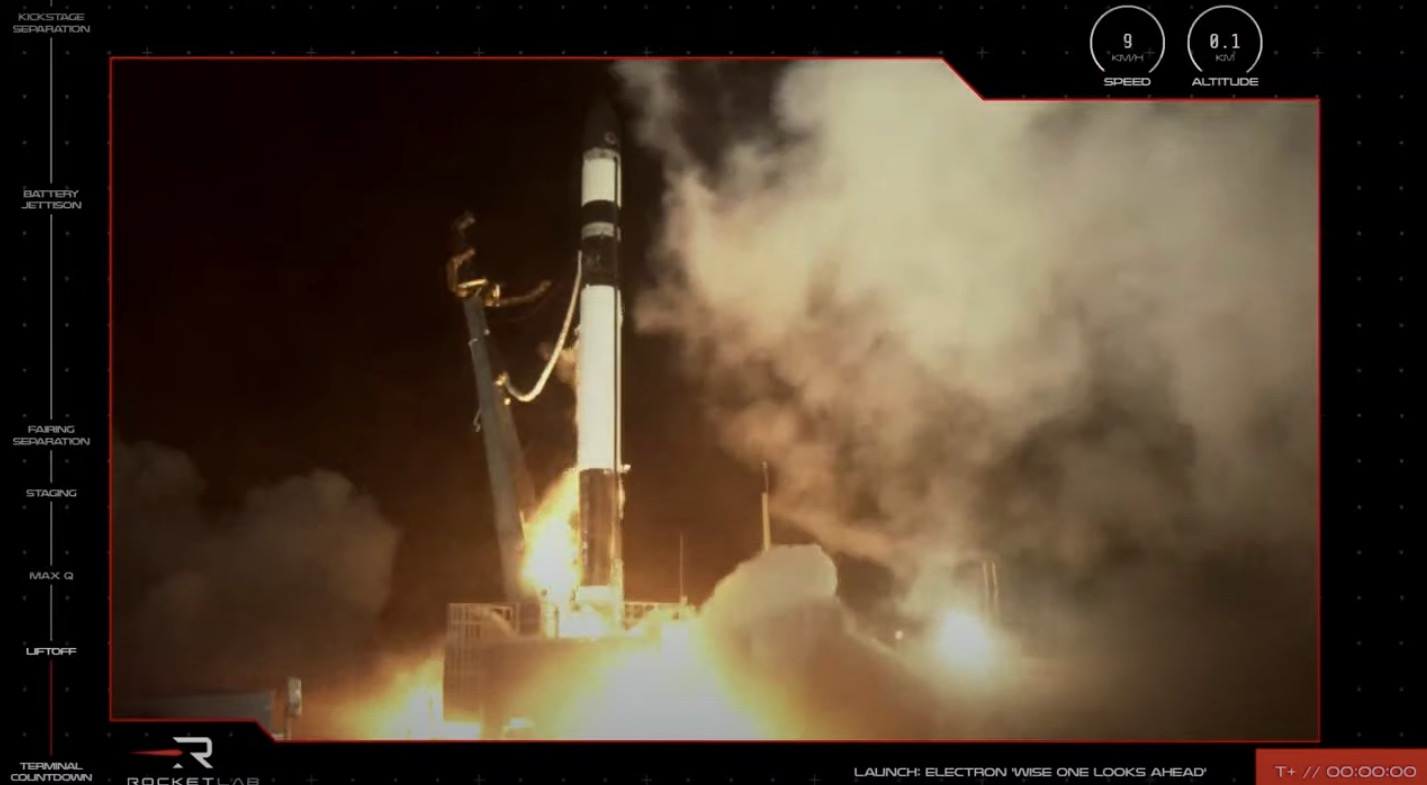Rocket Lab launches US spy satellite to orbit
Rocket Lab has delivered another spacecraft to orbit for the U.S. National Reconnaissance Office (NRO), which operates the nation's fleet of spy satellites.
A Rocket Lab Electron booster topped with the NROL-162 spacecraft lifted off from the company's New Zealand site on Wednesday (July 13) at 2:30 a.m. EDT (0630 GMT; 6:30 p.m. local time in New Zealand).
About an hour later, the Electron's "kick stage" deployed NROL-162 into Earth orbit as planned, Rocket Lab founder and CEO Peter Beck confirmed via Twitter, kicking off the satellite's mystery mission.
Related: Rocket Lab and its Electron booster (photos)

NROL-162 "will strengthen the NRO's ability to provide a wide range of timely intelligence information to national decision makers and intelligence analysts to protect the United States' vital interests and support humanitarian efforts worldwide," Rocket Lab wrote in a description of Wednesday's mission, which you can find here.
NROL-162 is a joint effort of the NRO and the Australian Department of Defence (AUS DoD). Rocket Lab will launch another mission developed by these two organizations soon, if all goes according to plan; NROL-199 is scheduled to lift off atop an Electron from New Zealand as early as July 23.
"The NROL-162 and 199 missions are the latest examples of the NRO's commitment to enhancing relationships with U.S. allies and partners and demonstrates the NRO's capability to launch multiple rockets from overseas locations back to back," Rocket Lab wrote in the mission description.
Breaking space news, the latest updates on rocket launches, skywatching events and more!
The NROL-162 flight, which Rocket Lab called "Wise One Looks Ahead," was just the latest in a string of national-security missions that the company has launched for the U.S. government. In January 2020, for example, an Electron launched the NRO's classified NROL-151 satellite. And in June of that year, Rocket Lab lofted three more hush-hush payloads for the spy agency.
"Wise One Looks Ahead" was the 28th launch overall for Electron, a 58-foot-tall (19 meters) rocket designed to give small satellites dedicated rides to Earth orbit. Electron has two main stages plus the small kick stage, which delivers customer payloads to their precise orbital destinations.
Electron can also be outfitted with Photon, an evolved version of the kick stage, to get spacecraft even farther afield. For example, a Photon-equipped Electron launched NASA's tiny CAPSTONE cubesat toward the moon on June 28. CAPSTONE deployed as planned from the Photon on July 4 and is now making its long and looping way to lunar orbit, with arrival scheduled for Nov. 13.
Several other launches will follow closely on the heels of "Wise One Looks Ahead," if all goes to plan. For example, Arianespace's new Vega C rocket is scheduled to make its debut launch Wednesday at 7:13 a.m. EDT (1113 GMT), and SpaceX plans to launch a robotic Dragon cargo capsule to the International Space Station on Thursday night (July 14).
Rocket Lab is working to make the Electron's first stage reusable, recovering boosters for inspection and analysis on several previous missions. There was no booster recovery on "Wise One Looks Ahead," however.
Mike Wall is the author of "Out There" (Grand Central Publishing, 2018; illustrated by Karl Tate), a book about the search for alien life. Follow him on Twitter @michaeldwall. Follow us on Twitter @Spacedotcom or on Facebook.

Michael Wall is a Senior Space Writer with Space.com and joined the team in 2010. He primarily covers exoplanets, spaceflight and military space, but has been known to dabble in the space art beat. His book about the search for alien life, "Out There," was published on Nov. 13, 2018. Before becoming a science writer, Michael worked as a herpetologist and wildlife biologist. He has a Ph.D. in evolutionary biology from the University of Sydney, Australia, a bachelor's degree from the University of Arizona, and a graduate certificate in science writing from the University of California, Santa Cruz. To find out what his latest project is, you can follow Michael on Twitter.
